Tag Archives: python
Decision Tree Classifier Python Code Example
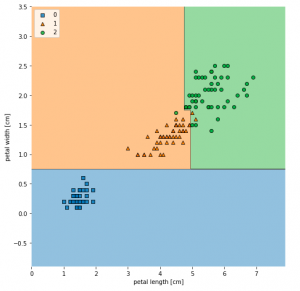
In this post, you will learn about how to train a decision tree classifier machine learning model using Python. The following points will be covered in this post: What is decision tree? Decision tree python code sample What is Decision Tree? Simply speaking, the decision tree algorithm breaks the data points into decision nodes resulting in a tree structure. The decision nodes represent the question based on which the data is split further into two or more child nodes. The tree is created until the data points at a specific child node is pure (all data belongs to one class). The criteria for creating the most optimal decision questions is …
How to Convert Sklearn Dataset to Dataframe

In this post, you will learn how to convert Sklearn.datasets to Pandas Dataframe. It will be useful to know this technique (code example) if you are comfortable working with Pandas Dataframe. You will be able to perform several operations faster with the dataframe. Sklearn datasets class comprises of several different types of datasets including some of the following: Iris Breast cancer Diabetes Boston Linnerud Images The code sample below is demonstrated with IRIS data set. Before looking into the code sample, recall that IRIS dataset when loaded has data in form of “data” and labels present as “target”. Executing the above code will print the following dataframe. In case, you don’t want to explicitly assign …
Sklearn SVM Classifier using LibSVM – Code Example
In this post, you learn about Sklearn LibSVM implementation used for training an SVM classifier, with code example. Here is a great guide for learning SVM classification, especially, for beginners in the field of data science/machine learning. LIBSVM is a library for Support Vector Machines (SVM) which provides an implementation for the following: C-SVC (Support Vector Classification) nu-SVC epsilon-SVR (Support Vector Regression) nu-SVR Distribution estimation (one-class SVM) In this post, you will see code examples in relation to C-SVC, and nu-SVC LIBSVM implementations. I will follow up with code examples for SVR and distribution estimation in future posts. Here are the links to their SKLearn pages for C-SVC and nu-SVC …
Python – How to Plot Learning Curves of Classifier
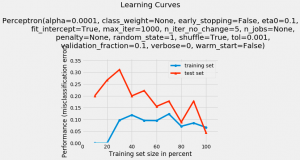
In this post, you will learn a technique using which you could plot the learning curve of a machine learning classification model. As a data scientist, you will find the Python code example very handy. In this post, the plot_learning_curves class of mlxtend.plotting module from mlxtend package is used. This package is created by Dr. Sebastian Raschka. Lets train a Perceptron model using iris data from sklearn.datasets. The accuracy of the model comes out to be 0.956 or 95.6%. Next, we will want to see how did the learning go. In order to do that, we will use plot_learning_curves class of mlxtend.plotting module. Here is a post on how to install mlxtend with Anaconda. The following …
Feature Scaling & Stratification for Model Performance (Python)
In this post, you will learn about how to improve machine learning models performance using techniques such as feature scaling and stratification. The following topics are covered in this post. The concepts have been explained using Python code samples. What is feature scaling and why one needs to do it? What is stratification? Training Perceptron model without feature scaling and stratification Training Perceptron model with feature scaling Training Perceptron model with feature scaling and stratification What is Feature Scaling and Why is it needed? Feature scaling is a technique of standardizing the features present in the data in a fixed range. This is done when data consists of features of varying …
How to use Sklearn Datasets For Machine Learning
In this post, you wil learn about how to use Sklearn datasets for training machine learning models. Here is a list of different types of datasets which are available as part of sklearn.datasets Iris (Iris plant datasets used – Classification) Boston (Boston house prices – Regression) Wine (Wine recognition set – Classification) Breast Cancer (Breast cancer wisconsin diagnostic – Classification) Digits (Optical recognition of handwritten digits dataset – Classification) Linnerud (Linnerrud dataset – Classification) Diabetes (Diabetes – Regression) The following command could help you load any of the datasets: All of the datasets come with the following and are intended for use with supervised learning: Data (to be used for …
Python – How to install mlxtend in Anaconda
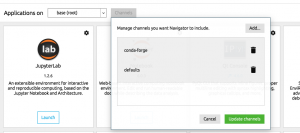
In this post, you will quickly learn about how to install mlxtend python package while you are working with Anaconda Jupyter Notebook. Mlxtend (machine learning extensions) is a Python library of useful tools for the day-to-day data science tasks. This library is created by Dr. Sebastian Raschka, an Assistant Professor of Statistics at the University of Wisconsin-Madison focusing on deep learning and machine learning research. Here is the instruction for installing within your Anaconda. Add a channel namely conda-forge by clicking on Channels button and then Add button. Open a command prompt and execute the following command: conda install mlxtend –channel Conda-forge Once installed, launch a Jupyter Notebook and try importing the following. This should work …
Python DataFrame – Assign New Labels to Columns
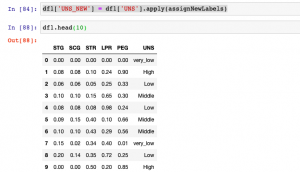
In this post, you will get a code sample related to how to assign new labels to columns in python programming while training machine learning models. This is going to be very helpful when working with classification machine learning problem. Many a time the labels for response or dependent variable are in text format and all one wants is to assign a number such as 0, 1, 2 etc instead of text labels. Beginner-level data scientists will find this code very handy. We will look at the code for the dataset as represented in the diagram below: In the above code, you will see that class labels are named as very_low, Low, High, Middle …
How to Print Unique Values in Pandas Dataframe Columns
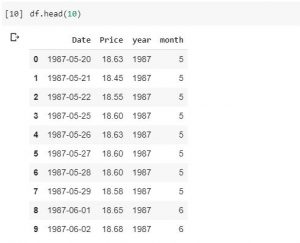
A quick post representing code sample on how to print unique values in Dataframe columns in Pandas. Here is a data frame comprising of oil prices on different dates which column such as year comprising of repeated/duplicate value of years. In the above data frame, the requirement is to print the unique value of year column. Here is the code for same. Note the method unique()
Python Quick Coding Tutorials for Experienced Developers
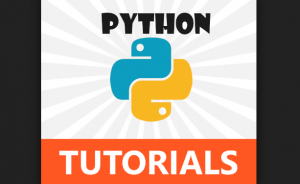
Learning Python has taken centerstage for many developers as Python is one of the key language for working in the field of data science/machine learning. If you are an experienced developer, this post would help you quickly get started with Python programming. In this post, you will quickly learn some of the following in relation to Python programming: Data types Input/output operations Defining functions Conditional expressions Looping constructs String functions Defining Module Defining Classes Exception handling Python Programming Concepts Data types: Python interprets and declares variables when they are equated to a value. The following represents how variables are casted to specific data types. float(variable): Casts variable to float int(variable): …
I found it very helpful. However the differences are not too understandable for me